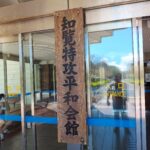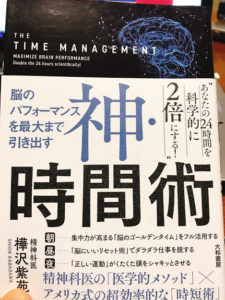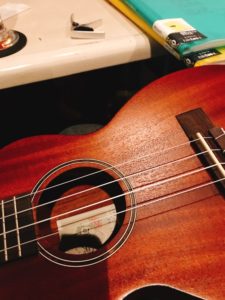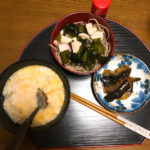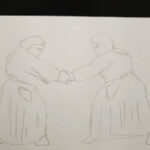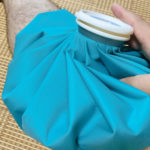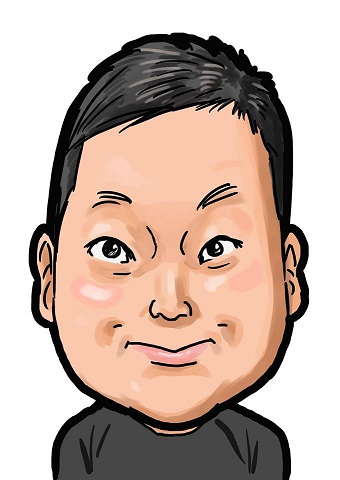金曜日は合気道の稽古の日です。
最近は新規入会者もあり、皆やる気に満ちていますね。
私も指導者の資格を取るために頑張っています。
いや、楽しんでいます。
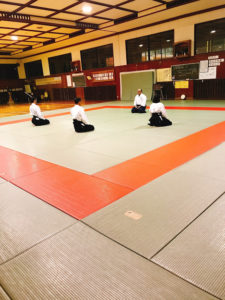
今回は私を入れて5人での稽古でした。
合気道の稽古内容について
実際に稽古と言っても、どのようなことをしているのでしょうか?
という質問を受けます。
私が通っている道場の稽古内容は以下の通りです。
今回は写真が少ないので、どんどん撮っては追記していきたいと思います。
1額の設置と掃除
先ずは道場に最初に来た人(先生の場合も含め)が、額を壁にかけます。
1.植芝盛平先生の御写真
2.合気道の精神
次に、木剣を額の前に置きます。
そして道着に着替えたら道場の畳を掃除します。
掃除は箒で掃いていきます。
掃除が終わったら、先生に挨拶をします。
「こんばんは、よろしくお願いします。」
2礼拝~準備運動
稽古開始時間になったら先生から稽古始の合図があります。
そして以下の順番で事が進みます。
-
- 木剣による36方斬り
- 神棚と植芝盛平先生へ礼拝
- 準備運動
36方斬りは、先生が木剣で1回転しながら36回素振りをされます。
その後、神棚と植芝盛平先生へ礼拝をします。
これは神社と同じ、2礼2拍手1礼ですが、正座して行います。
準備運動は万生館合気道のやり方を引き継いでいます。
船漕ぎ運動から前屈や屈伸、深呼吸を含めてものです。
ここでは省略します。
その後、膝行(正座から膝で前進する動き)をします。
3基本の型の練習
基本型の練習は毎回同じことをやります。
-
- 横面打ちの体捌き
- 突きの体捌き
- 突き~横面打ち~突き
- 横面打ち~突き~横面打ちからの小手返し
- 対多数者の体捌き
こうして書いてみるとたくさんありますね^^;
どれも動きが難しくて、覚えるのに1カ月はかかりました。
特に「横面打ちの体捌き」は難しいと思います。
けれどもこの基本型の稽古をすると、とても受け身が取りやすくなります。
体がほぐれるためでしょうね。
4稽古本番 ~基本から大技まで~
ここから本格的な稽古に入ります。
この時点で20分くらい経っています。
まず、全員が畳の外側に先生を囲むように座ります。
そして、全員が先生に一人ずつ技をかけてもらい、向かい合った人同士でその技の練習をします。
二人一組で黙々と、中にはワイワイと練習します。
正座した状態での技や、立った状態での技。
相手を固めてしまう技(1か条など)や、投げ技(呼吸投げ)もやります。
初心者の方はゆっくりと先ずは形から覚えていくのがいいですね。
逆に有段者同志の練習は見ててとても参考になります。
投げて投げて、バンバン前受け身をするのはとても格好いいですね。
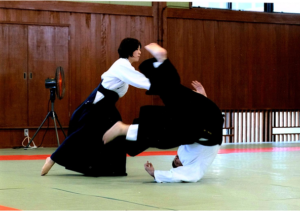
5整理体操~終わりの礼拝
稽古が終わったら、整理体操を二人一組で行います。
そして稽古開始の時と同じ礼拝を稽古終わりにも行います。
6稽古後の掃除~自主練習
稽古が終了したら、皆で掃除と後片付けをします。
掃除は畳を箒で掃いていくやつです。
片付けは、額と木剣を箱にしまいます。
そして先生に終わりの挨拶をします。
稽古はここまでで、そのまま着替えるんですが、やる気がある人は自主練習に入ります。
主に、昇給昇段審査前のおさらいや、演武の練習です。
私は体調が良い時は、先生に10本連続で投げてもらいます。
これがとてもいい「アウトプット」になるんです。
稽古場所と稽古時間について
稽古場所と稽古時間についてです。
各団体で自前の道場を所有されている所もあれば、色々な武道館や公民館やカルチャーセンターなどで行います。
稽古時間は団体によって様々です。
私の通ってる道場は、平日は19時~21時(月木除く) 土曜は午前中、日曜は19時~21時
という感じです。
もちろん平日日中にされているところもございます。
こればかりは各団体にお問い合わせください。
前回投稿した「熊本県の合気道の道場(教室)の見学方法や必要道具、月謝を解説」でマップを用意しています。
そちらからお問い合わせてみてください。
初心者の方へアドバイス
入門してすぐの方は、基本の型の動きにとても戸惑うと思います。
私も、一つの型を覚えるのに1か月かかりました。
でも、ここで挫折することなく続けるにはどうしたらいいか?
とにかく「素直に」先生や諸先輩の支持を仰ぐことだと思います。
結局武道は、この素直さを育てることが大事なのだと思います。
それでも、型はいいから、早く実戦的な技を教えろ!
という人もいますが、そういう人は長続きしません。
今日の稽古のまとめ
今回の稽古は呼吸力を中心に練習しました。
呼吸力とは説明が難しいですが、合気道のマインドをもって行うことだと思います。
兎にも角にも、「体捌き」が重要ですね。
つい手先だけの動きになってしまいますが、大事なのは下半身の動きです。
砂泊大先生も体捌きを極めて、呼吸力を身につけられたと聞きました。
私も早くその境地に達したいから、毎日でも稽古したいくらいです。
熊本県でも各地で道場(教室)があります。
是非、熊本県合気道マップをもとにご自身に合った道場(教室)を見つけていただけると大変うれしく思います。
次回はまた10本連続技の動画を録画して公開したいと思います!
たいこでした!



